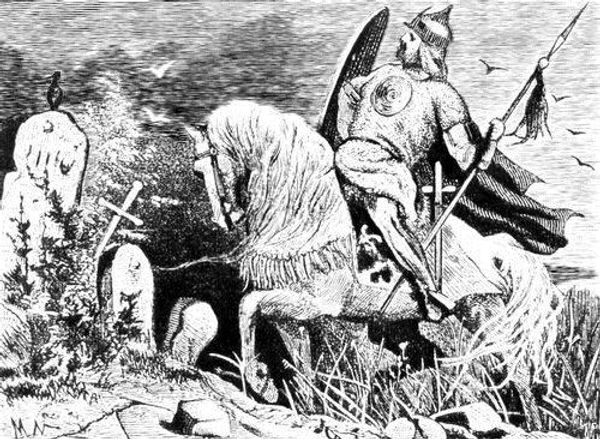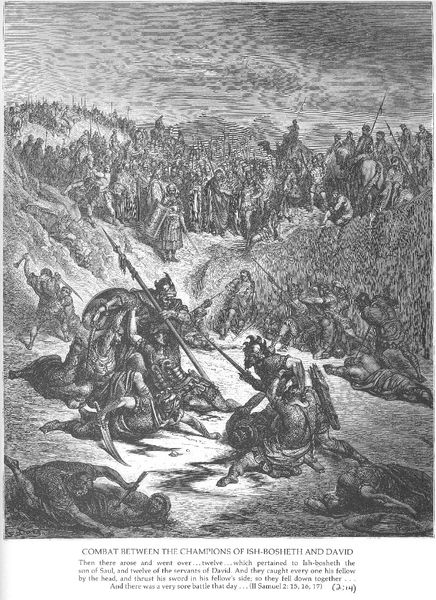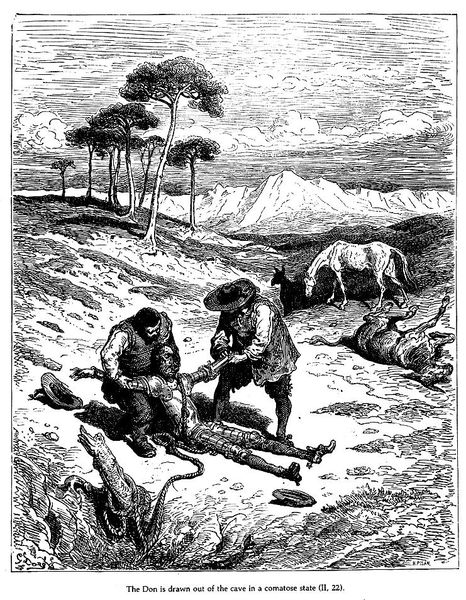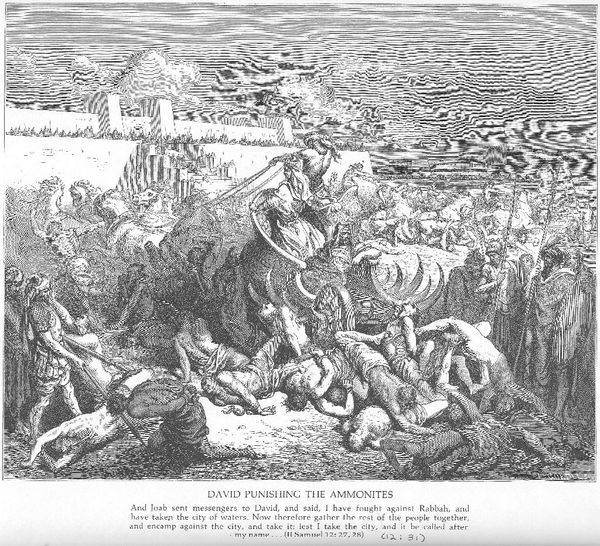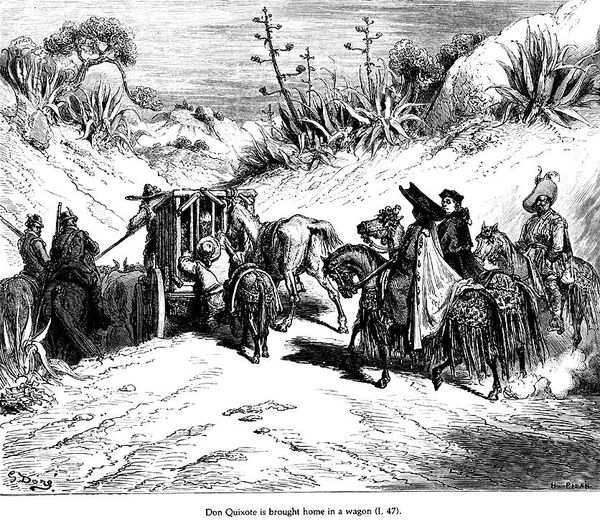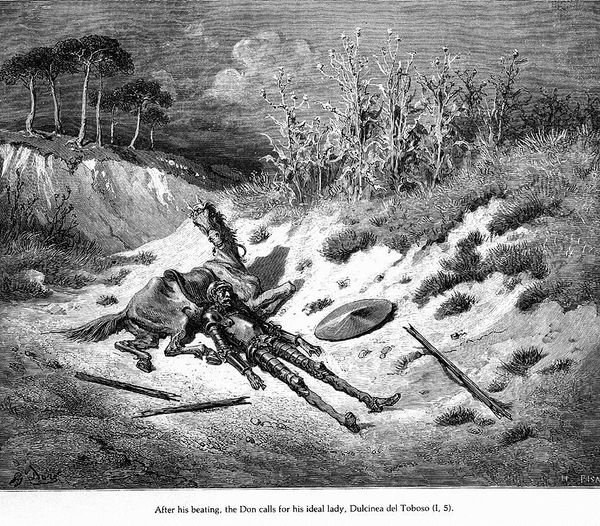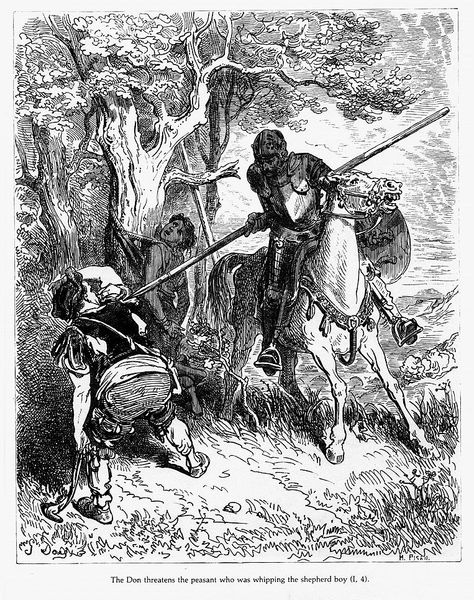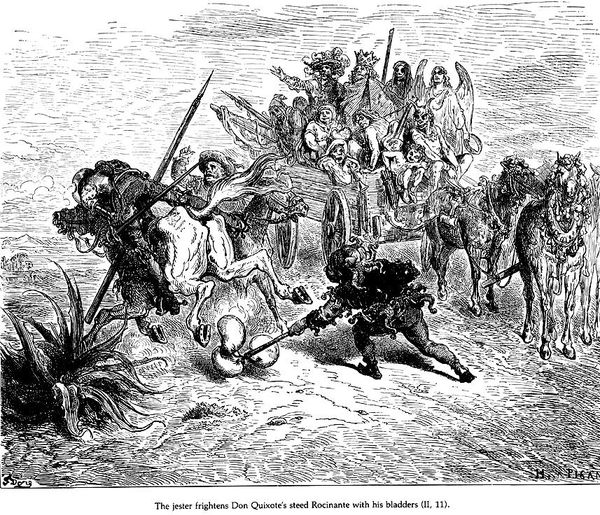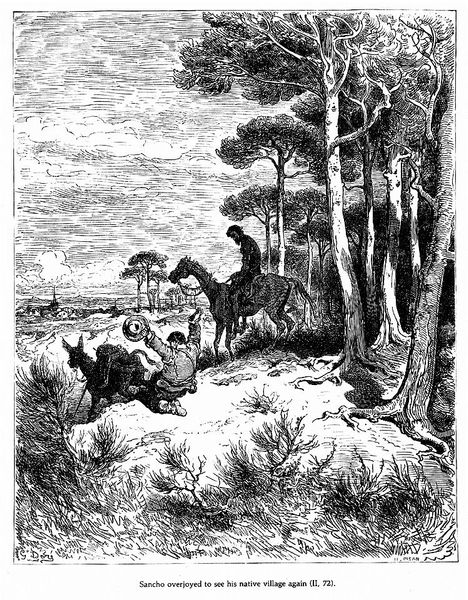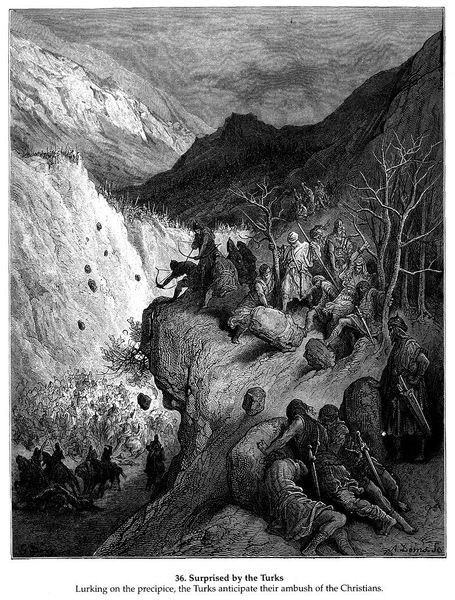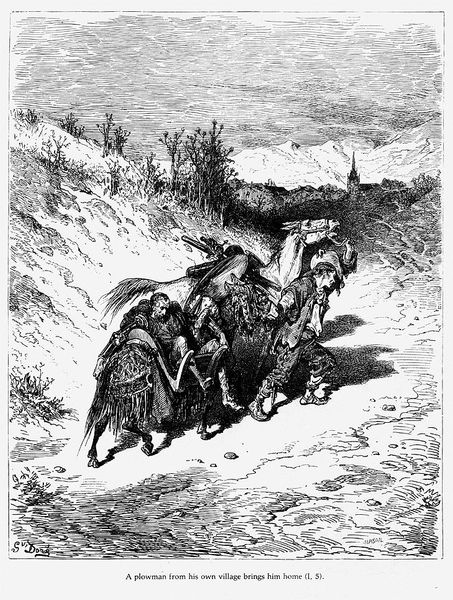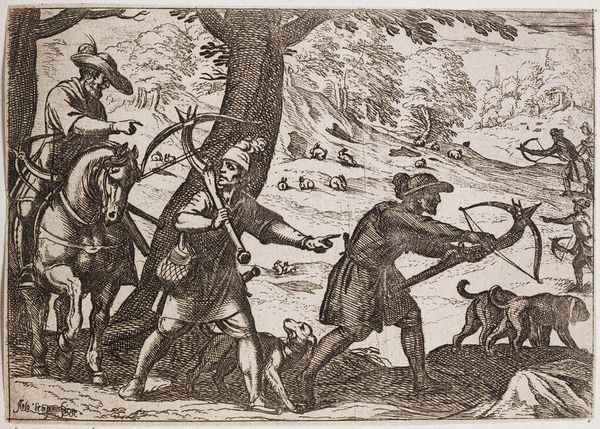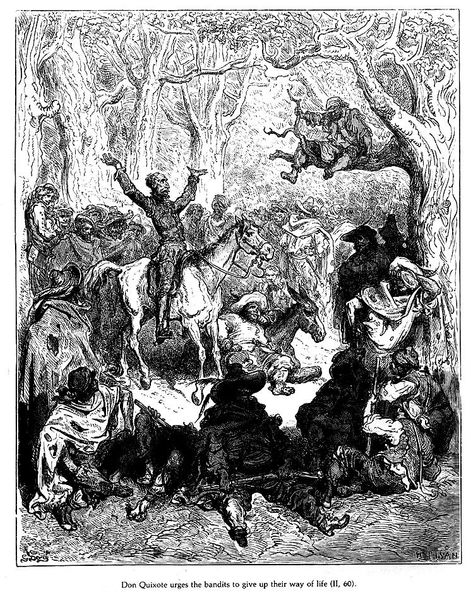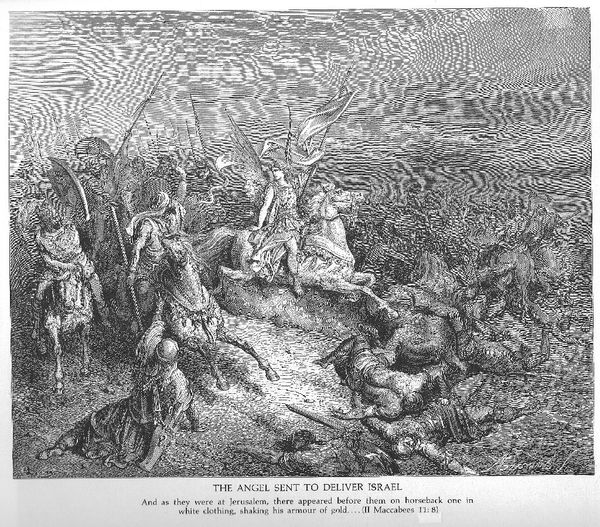
drawing, paper, ink
#
drawing
#
narrative-art
#
landscape
#
figuration
#
paper
#
ink
#
history-painting
Copyright: Public domain
Gustave Doré's ink drawing presents Don Quixote in a desolate landscape, a fallen Rocinante at his side, while Sancho Panza tumbles down a slope. The stark imagery evokes a sense of disillusionment, and the fall from grace. Observe the fallen horse, its legs pathetically upended. This symbol of a noble steed humbled resonates with images of defeated warriors throughout art history, echoing the fall of Icarus or the dethroning of kings. The broken lances signify shattered ideals, a motif we see repeated across centuries, from medieval tapestries to modern war photography. The act of falling carries potent psychological weight. We may recall the expulsion from Eden or the numerous depictions of the damned in Renaissance art. It’s a universal fear, the loss of control, and the reminder of mortality that Doré masterfully captures. This descent is not merely physical; it’s a plunge into disillusionment. The cyclical nature of hope and despair is ever-present. The spirit of chivalry may wane, but it resurfaces time and again in different guises. The archetype of the hero, battered but unbowed, persists in our collective consciousness.
Comments
No comments
Be the first to comment and join the conversation on the ultimate creative platform.
